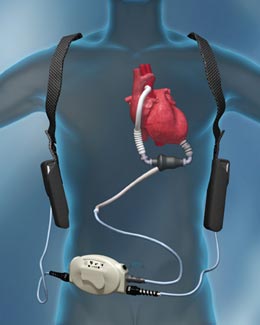
As a (geriatric) primary care provider and (palliative medicine) specialist who cares for patients with heart failure (HF), the 2013 American College of Cardiology Foundation (ACCF)/American Heart Association (AHA) Guideline for Management of HF should be directly relevant to my clinical practice, right?
Well, as recently stated by Dr. Fred Masoudi in Journal Watch, these guidelines are an important comprehensive revision and reflect a growing evidence base. He notes that the guidelines provide a concrete definition of guideline-directed medical therapy (GDMT) and place substantially greater emphasis on care transitions, patient engagement, and quality improvement. In particular, Table 34(Plan of Care for Patients with Chronic HF) may be a helpful resource, though pragmatic interventions for older HF patients with palliative care needs remain largely absent. While the 2009 guidelines had a brief section titled “End-of-Life Considerations,” these updated guidelines highlight recommendations for coordination of care for patients with chronic HF, including a Class I recommendation that palliative and supportive care is effective for patients with symptomatic advanced HF to improve quality of life. This is obviously good and reflects contemporary work by HF, geriatric, and palliative care specialists.
However, while the recommendations are helpful, the guidelines note several important evidence gaps. Geriatric and palliative medicine providers will certainly agree. As GeriPal readers are well-aware, the majority of clinical trials that inform GDMT were designed around the primary endpoint of mortality. For most GDMT, there is less certainty about the impact on quality of life, which is often a concurrent, if not the main goal of our patients and their families. Our patients are also often not included in the majority of trials, which didn’t include sufficient numbers of elderly, women, underrepresented minorities, or the sickest sick. As a geriatric and palliative medicine provider, I agree with the critical need for an evidence base that clearly identifies best processes of care, especially in the transition from hospital to home. There is clearly an opportunity for geriatric and palliative medicine researchers to continue to assist with the development, evaluation, dissemination and implementation of effective patient and family-centered interventions. As Dr. Masoudi notes, “Most of the recommendations… require functional systems of care in both the inpatient and outpatient settings and cannot be achieved by an individual practitioner in isolation.” This is what geriatric and palliative medicine specializes in!
So, where are we in terms of best palliative and supportive care for the older adult with HF and multiple medical conditions? It has been 10 years since Goodlin and others published the “Consensus statement: Palliative and supportive care in advanced HF”, which has driven the framework for research and clinical practices to improve the needs of this patient population. Gadoud and her colleagues recently summarized the current evidence and future direction for palliative care for people with HF. Abete and colleagues also summarized treatment for chronic HF in the elderly: current practice and problems. Hopefully, the next ACC/AHA HF guidelines update will be able to incorporate results from high-quality pragmatic interventions that focus on the comprehensive needs of older patients with chronic HF, especially related to the significant symptom burden, impact of depression, cognitive impairment, functional limitations, and caregiver and support needs that GeriPal readers see every day.
In your practice, what needs or successes do you see in the care of the “GeriPal” patient with HF?
By Hillary Lum (@hdaylum)



